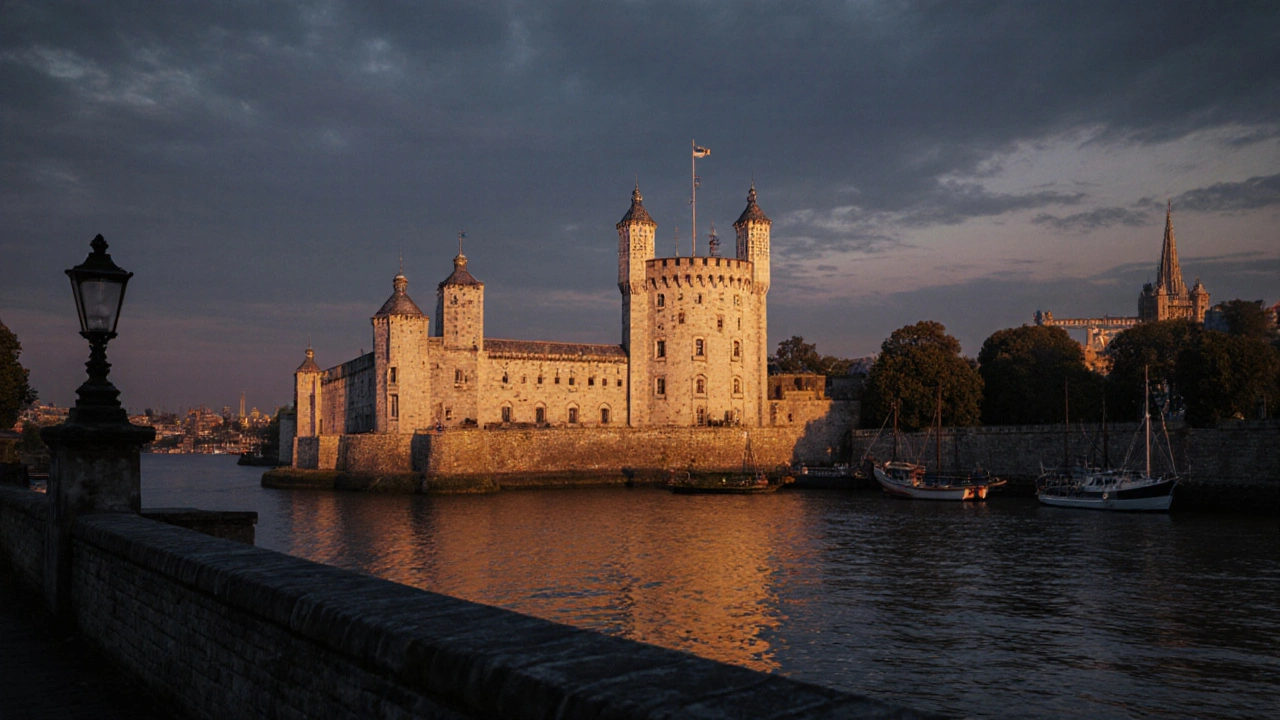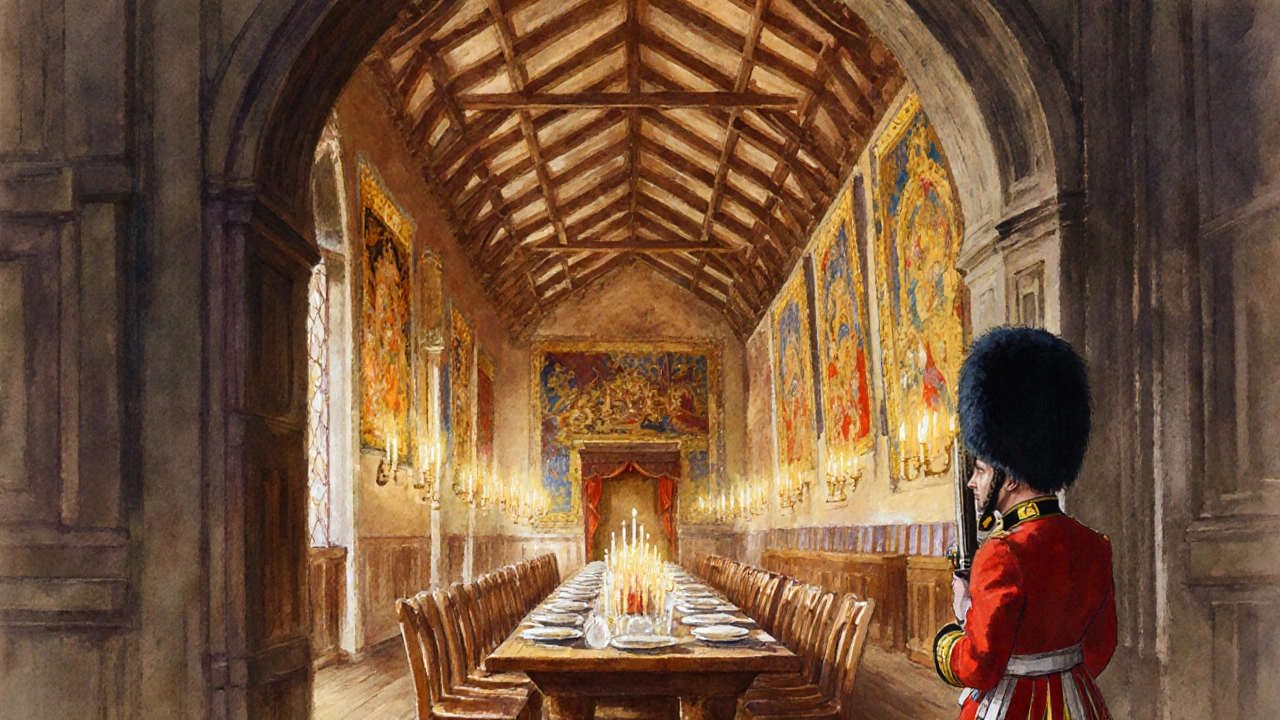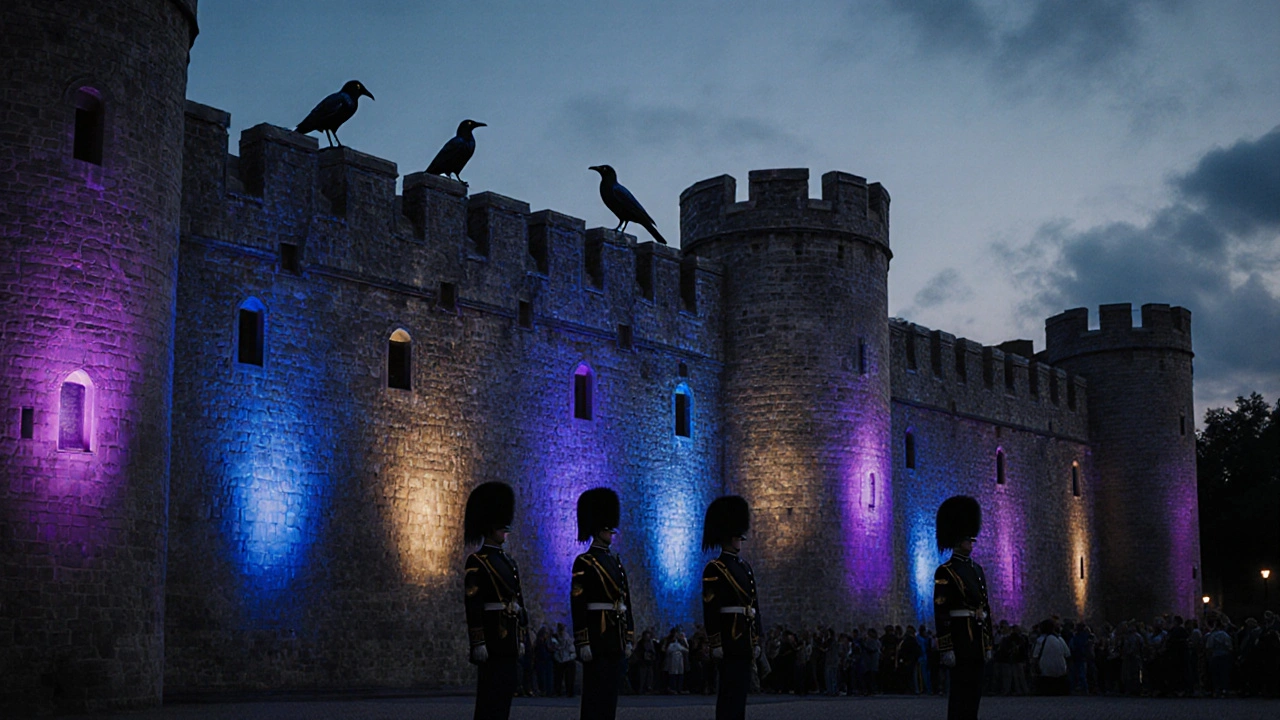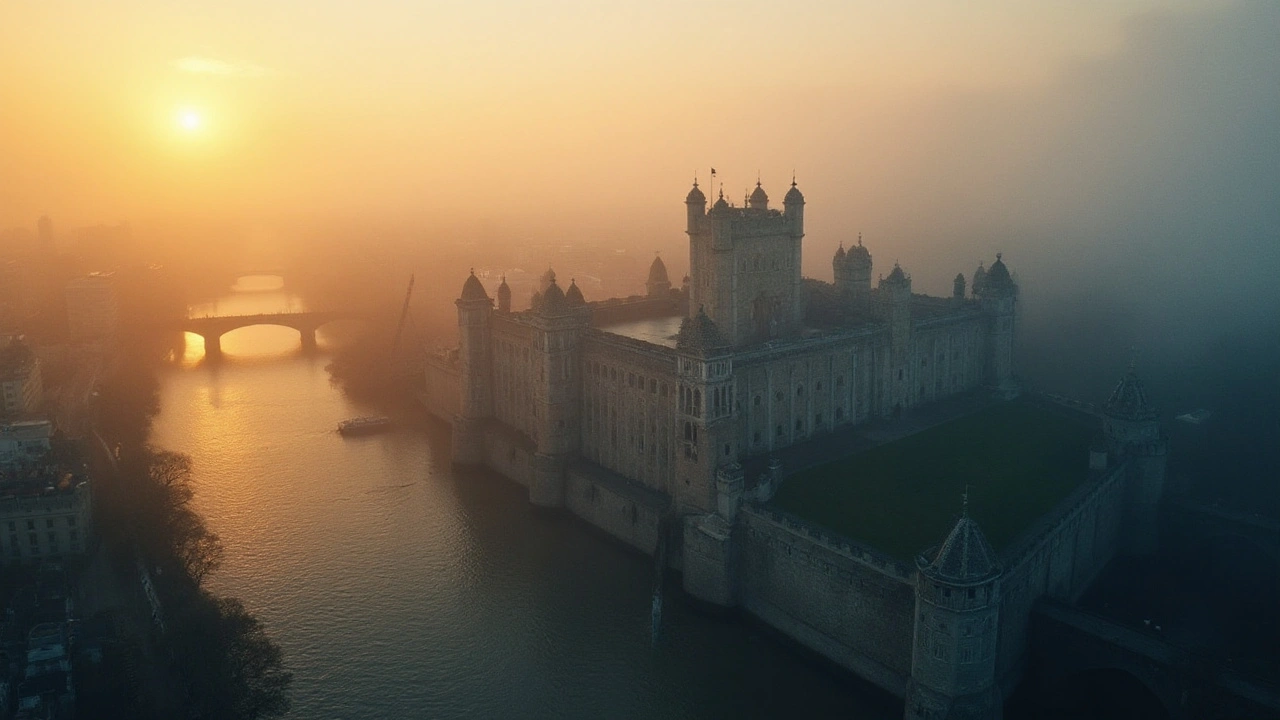The Tower of London: The Fortress That Shaped a Nation

When you think of iconic sights in London, the Tower of London is the first name that pops up. Built on the north bank of the River Thames, this medieval stronghold has watched the city grow from a trading post to a global capital. Its stone walls, mysterious ravens, and glittering crown jewels make it a living museum of British power, and a neighbourhood favourite for brunch‑after‑tourers from Shoreditch to South Kensington.
From Norman Conquest to White Tower
In 1066 William the Conqueror claimed the city and ordered a massive fortress to protect his new kingdom. The heart of the complex - the White Tower - was finished around 1087. Standing 27 metres tall, its thick limestone walls were designed to intimidate rivals and house a garrison of Norman soldiers.
Archaeologists still find Roman-era artefacts beneath the foundations, reminding us that the site has been a hub of activity for over two millennia. The original layout featured a moat (now a decorative water feature), a massive gatehouse, and a series of inner courtyards that later evolved into the bailey we walk through today.
A Royal Residence and Power Symbol
Beyond its military purpose, the fortress soon became a royal palace. Kings and queens from HenryIII to ElizabethI took up residence, holding lavish banquets in the Great Hall - the same hall where today you can hear the echo of a medieval feast while snapping a selfie.
The Tower also turned into a grim stage for political drama. High‑profile prisoners like Anne Boleyn, Sir Thomas More, and the two Princes in the Tower were held within its walls, often meeting a tragic end. The phrase “sent to the Tower” still carries that chilling weight in London’s everyday speech.
The Crown Jewels and the Jewel House
Since the 1300s the monarch’s regalia have been stored in the Jewel House. Today, the Crown Jewels attract more than 2million visitors a year, making the Tower one of the most popular London attractions. The collection includes the St.Edward’s Crown, the Imperial State Crown, and the renowned Koh-i-Noor diamond.
Security is tight - each piece is weighed, photographed, and monitored by a team of conservators. The display case is built from bullet‑proof glass, and a 24‑hour guard rotation from the Yeoman Warders (better known as Beefeaters) ensures nothing goes awry.

Yeoman Warders, Ravens, and Living Traditions
The colourful, beefeater‑clad guards are more than just theatrical staff. They are sworn members of the Royal Corps of Military Police who have served for at least 22 years. Their duties include giving guided tours, overseeing the Crown Jewels, and-most famously-caring for the resident ravens.
According to a 12th‑century legend, if the ravens ever leave the Tower, the kingdom will fall. To prevent that, a dedicated caretaker feeds the birds daily and ensures at least six healthy ravens remain on the premises. The sight of these glossy black birds perched on the battlements is now a beloved selfie‑spot for locals and tourists alike.
Modern Role: Tourism, Events, and Cultural Impact
For Londoners, the Tower is more than a museum; it’s a venue for unique experiences. The annual “Tower Live” concert series hosts orchestras alongside light installations that splash the White Tower with colour. In summer, the grounds host the “Tower of London Ghost Walk,” a tongue‑in‑cheek tour that mixes history with spooky anecdotes.
Its proximity to other landmarks-such as Tower Bridge, the historic “Shard” area, and the vibrant St.Kathryn‑by‑the‑Tower market-makes it a natural hub for day‑trippers. The nearby London Bridge Station and Tower Hill Underground stop mean you can hop on a train from Stratford, Camden, or even Heathrow and be inside in under 30 minutes.

Practical Tips for London Residents and Visitors
- Buy tickets online to skip the queue. Early‑bird discounts are available on the official website, and combo tickets that include a River Thames cruise often save you a few pounds.
- Visit on a weekday morning (9am-11am) for the calmest experience. The busiest spikes happen around lunchtime on Saturdays.
- Dress for the weather. Even in early summer, the courtyard can be breezy, and the interior halls stay cool.
- Plan a stop at nearby eateries. The Perkin Reveller, a riverside gastropub, offers a “Tower view” platter, while the “Borough Market” stalls are just a 10‑minute walk away for a quick bite.
- Take the London Pass if you’re ticking off multiple attractions; the Tower is included, and you’ll get a fast‑track entry.
For expatriates wanting a taste of British heritage, a guided “Royal History” tour runs twice daily and includes anecdotes about the Tudor dynasty, the English Civil War, and the last time a royal residence was attacked (the 1979 IRA bombing at the nearby Guildhall).
Quick Facts
| Attribute | Details |
|---|---|
| Founded | 1078 (White Tower completed 1087) |
| Location | London EC3N 4AB, beside the River Thames |
| Height of White Tower | 27m (88ft) |
| Annual visitors | ~2million (pre‑COVID numbers) |
| Resident ravens | At least six, cared for by a dedicated keeper |
| Crown Jewels | 31pieces, including St.Edward’s Crown |
| Nearest Tube | Tower Hill (Circle & District lines) |
| Opening hours | 9am - 5pm (varies seasonally) |
Frequently Asked Questions
Can I see the Crown Jewels without waiting in line?
Yes. Purchasing a timed‑entry ticket online guarantees you a specific slot, which usually skips the main queue. Fast‑track passes are also sold at the ticket office for a premium.
Are the ravens ever allowed to leave the Tower?
Ravens are kept under a special licence. They can be taken out for veterinary checks, but a caretaker always ensures at least six remain on‑site, honoring the ancient legend.
Is photography allowed inside the Jewel House?
Photography is prohibited inside the Jewel House to protect the jewels from flash‑induced damage. However, you can snap pictures of the exterior and the surrounding battlements.
Do the Yeoman Warders give free tours?
All tours led by the Beefeaters are included in the admission price. They offer a mix of scripted history and personal anecdotes, making each visit unique.
What’s the best time of year to visit?
Late spring (May‑June) and early autumn (September) provide milder weather and fewer crowds. The Tower’s gardens are especially beautiful during these months.


jasper watervoort
October 8, 2025 AT 18:40Wow the Tower really feels like a living book of history. You can almost hear the echoes of old soldiers when you walk the walls. It’s a place that makes you think about how much has changed and yet some things stay the same.
desiree marin parraga
October 8, 2025 AT 18:46The Tower of London isn’t just a tourist spot; it’s the very heart of England’s gritty saga! From William’s stone‑capped ambition to the whispered legends of the raven curse, every stone seems to scream a story. I love how the Beefeaters parade in their flamboyant crimson coats – a perfect blend of pageantry and martial pride. And let’s not forget the Crown Jewels, sparkling reminders that power can be both dazzling and dangerous. This place truly embodies the drama of a nation forged in fire and intrigue.
Angie Hansen
October 8, 2025 AT 18:55Don’t be fooled by the glossy brochures – the Tower is a hub for secret surveillance, hidden beneath those ancient walls. The state uses the constant flow of tourists to mask covert operations and monitor dissent. Every raven is likely equipped with tiny listening devices, feeding data straight to high‑level ministries. It’s high time we recognize the Tower as a modern intelligence bastion, not just a nostalgic museum.
Dawn Dougherty
October 8, 2025 AT 19:03Sure, the Tower is “historic,” but you can’t beat a good Saturday night at a rooftop bar for real vibes 😏
Beverly DeSimone
October 8, 2025 AT 19:11It’s great that you’re planning a visit – the Tower offers a fantastic mix of education and entertainment. I recommend joining the early‑morning guided tour; the guides often share lesser‑known facts that enrich the experience. Remember to wear comfortable shoes, as the stone‑covered courtyards can be uneven. Have a wonderful time exploring the layers of British history!
Kathy Irion
October 8, 2025 AT 19:20The Tower of London stands as a colossal testament to the relentless march of power, legacy, and myth that has shaped the British Isles for centuries. Its white stone façade, erected under the watchful eye of William the Conqueror, was designed to intimidate any who might challenge Norman authority, and it succeeded beyond any reasonable expectation. Over the ensuing centuries, monarchs transformed the fortress from a stark military bastion into a palatial residence, a royal treasury, and a grim prison – each layer adding to its complex identity. The very walls have witnessed the rise and fall of kings, the betrayal of queens, and the silent sorrow of the two princes who vanished within its chambers. One cannot separate the image of the Tower from its resident ravens, those glossy black sentinels that folklore claims safeguard the realm – a legend that has been cleverly harnessed to bolster tourism. Yet, behind the pageantry of beefeaters and ceremonial guard changes lies a subtle, almost unnerving continuity of surveillance, as the Crown Jewels are guarded with technology that would far outstrip medieval watchmen. The Jewel House itself, reinforced with bullet‑proof glass and monitored by cameras, epitomizes the uneasy marriage of ancient heritage and modern security exigencies. Visitors who stroll through the courtyard in early morning light may feel a shiver, not merely from the chill wind, but from the weight of history pressing upon their shoulders. Scholars often argue that the Tower’s enduring allure stems from this very juxtaposition – a place where past atrocities coexist with sparkling symbols of sovereignty. Moreover, the Tower’s role in contemporary culture, from concert series to ghost walks, demonstrates its adaptability and relevance in a rapidly‑changing world. The annual “Tower Live” concerts, with orchestras bathing the stone walls in resonant sound, create a sensory bridge between the old and the new, reminding us that history is not a static tableau but a living narrative. In evaluating the Tower’s impact, one must also acknowledge its economic contribution, drawing millions of visitors and supporting countless local businesses. The surrounding area, from the bustling markets to the majestic Tower Bridge, thrives on the magnetic pull of this historic site. It is perhaps this synergy of history, myth, and modernity that cements the Tower’s place at the heart of national identity. As we reflect on the imposing silhouette against the Thames, we are reminded that the Tower is more than stone; it is a symbol, a story, and a continual source of fascination for generations to come.
Marie Elizabeth
October 8, 2025 AT 19:28I totally get why the Tower feels like a must‑visit; its layered history really speaks to all of us. If you’re looking for a balanced day, pair the tour with a stroll along the Thames – the river adds a soothing backdrop. Enjoy the experience and stay curious! 😊